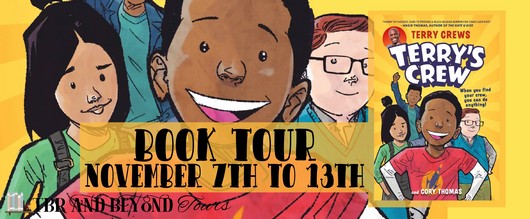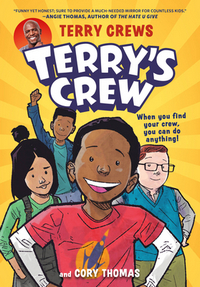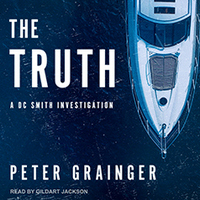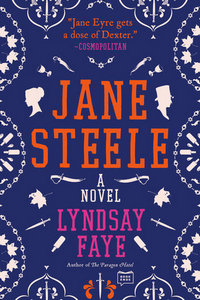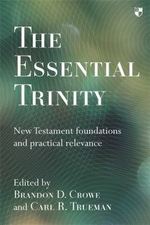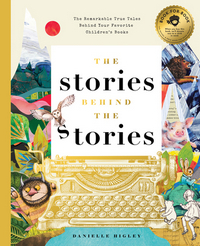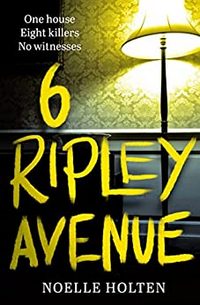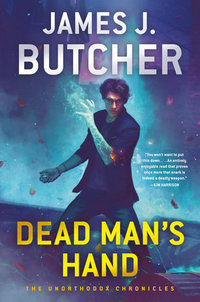 Flight Risk
Flight Risk
DETAILS: Series: Booking Agents Series, #2 Publisher: Atria Books Publication Date: November 15, 2022 Format: eARC Length: 320 pg. Read Date: October 20-21, 2022

What’s Flight Risk About?
Grady and his daughter lose their dog while visiting Mt. Rainer—but never fear, they find him—much to their relief. They’re not at all relieved by the fact that when he’s found, he’s carrying a human leg in his mouth. While it’s a different jurisdiction, it’s soon determined that the (probably dead) man missing a leg is/was a Seattle resident, so Grady handles that end of the investigation.
At the same time, Leda is approached by a man to find his sister. This is a major step up for Leda’s psychic consulting—since the news coverage stemming from the events in Grave Reservations, she’s been hired to find a few missing things (mostly successfully), but a person that’s been gone for a month is a significant case. She takes it on with some hesitation, and several caveats toward the brother that she might not find anything, and he might not like what she is able to find.
Naturally, there’s a connection between both missing persons, and Grady and Leda team up again.
Leda’s having a hard time making headway, at first, with her case, and calls in the woman who’d offered to mentor her for some help. Almost immediately the medium demonstrates that this was a wise choice and that she’s the real deal. As she works with Leda, providing a nudge or two, she hints that Leda may discover other abilities as she grows as a psychic—which will be interesting to watch, for sure.
Det. Grady Merritt
Flight Risk features a lot more of Grady on his own (still plenty of Grady with Leda and Grady with everyone else, don’t worry) doing police work. It’s good to see him plugging away at things and interacting with his partner (who I hope we get more time with in the future—Sam and Niki would be a fun team-up).
He doesn’t strike me as a super-cop like Bosch or Ballard—but he’s the kind you hope our police departments are full of—decent guys who are dedicated to their jobs, driven by curiosity and a sense of duty. He just happens to be pretty lucky and he now has a psychic friend who can lend a hand. I enjoy reading about this kind of police detective*, it gives me hope.
* I’m still devouring books about Bosch, Ballard, Washington Poe, and other super-cops, don’t get me wrong.
Niki
Leda’s best friend Niki is, of course, back. In Grave Reservations, Niki essentially pushed Leda to take risks, to persevere in the investigation, and so on. Then, when she accompanied Leda and Grady when they were investigating, she could be relied upon to go a little further than Leda, and would carry the comedic weight in her scenes.
Here in Flight Risk, she has the same roles. But Leda’s more confident now and doesn’t need her friend egging her on quite as much either on-stage or in her office. She is still a little more “out there” when she rides along with Grady and her friend, but I think she’s more restrained there, too.
I might be a little off here, and if I revisit this next year, I’ll wonder what I was thinking here. But right now, Niki seems to be the weak link in this book, not bringing quite enough to the plot or to the comedy. A toned-down Niki is more grounded, more realistic—absolutely. But if she’s not being Lula to Leda’s Stephanie Plum, I’m not sure what purpose she’s serving. I should stress, I don’t think Priest shouldn’t have her around, nor do I want her to be as goofy as Lula (the world doesn’t need another one)—but we just need her to be a little less restrained.
The Law of Interconnected Monkey Business
So, anyone who’s read a mystery novel before will be pretty sure that there’s a tie between Grady’s and Leda’s cases are going to be connected. Obviously, if you read the above section or the description on the back of the book or on the online store of your choice, you’ll know that, too.
That’s not what I want to talk about—it’s the way that Priest combined these two cases and got Leda and Grady to work together again. I honestly expected that this series would be Grady bringing cases to Leda, either on his own or because he’s instructed to, when the SPD comes up against a tough case. But that’s clearly not going to be the case.
There’s going to be flexibility—even possibly some times when Grady comes into things pretty late in the game (I can’t see leaving the police out of a book entirely). The fact that Priest stayed away from the structure of the first book already is an encouraging sign and shows that this isn’t going to be a cookie-cutter kind of series, but that she’s going to bring something new each time.
So, what did I think about Flight Risk?
I have to say this one was a tough one to write about—I almost felt like I could copy and paste what I said about Grave Reservations here. If you liked that novel, you’ll dig this one—having introduced the characters and world, Priest (and the readers) can focus more on the mysteries, and the book is better for it.
The mysteries were well-designed and executed, with the psychic clues/impressions/whatever along the way pointing Grady and Leda in the right direction, but not giving them so much that they don’t have to work out things for themselves (with one notable exception). This is the way to do a Psychic Detective novel. The red herrings and false trails were particularly well-done and I enjoyed seeing our protagonists dealing with them.
We got a better sense of all the supporting characters, as one would expect/hope, and I enjoyed them all. This is really a pleasant little universe that Priest has given us and I hope we get to hang out with these characters for a good while to come.
Flight Risk would be a good introductory novel for this series as well as a pleasant continuation for those who read Grave Reservations—it’s light(ish) fun with a dash of the supernatural to enliven the mystery, the combination of police and amateur detectives working together is a tried and true way to make things entertaining—and Priest uses it well. This novel hit the spot for this reader, and I look forward to another case or two soon. I definitely recommend this one to you.
Disclaimer: I received this eARC from Atria Books via NetGalley in exchange for this post that reflects my honest opinion—thanks to both for this.
This post contains an affiliate link. If you purchase from it, I will get a small commission at no additional cost to you. As always, the opinions expressed are my own.
![]()



